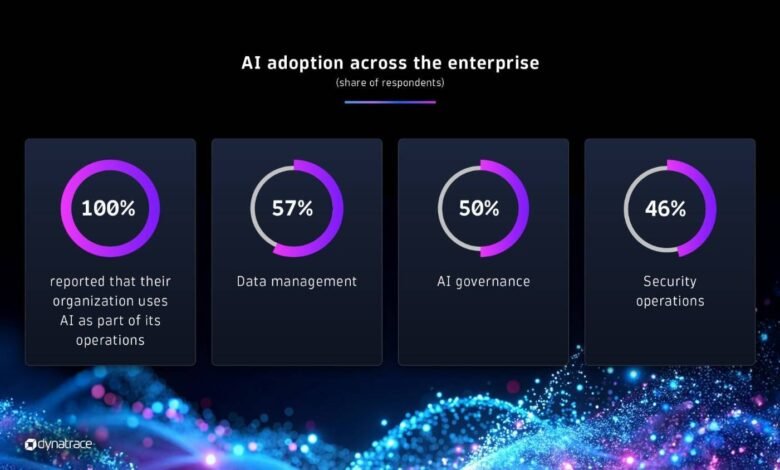Business Leaders Demand New Paths to AI Value and Trust

▼ Summary
– All surveyed business leaders currently use AI in operations, with top applications including data management (57%), AI governance (50%), and security operations (46%).
– AI adoption faces reliability and trust challenges, with 25% of leaders prioritizing improved AI governance and concerns about data quality (50%) and privacy (45%).
– Observability budgets have increased for 70% of organizations in the past year, with 75% expecting further increases to scale AI projects and ensure system transparency.
– Human verification remains critical, as 69% of AI-powered decisions still involve human-in-the-loop processes to ensure accuracy.
– Leaders anticipate significant AI value in security risk detection (37%) and anomaly detection (41%), with 50% expecting AI-powered data encryption and threat capabilities by 2030.
Business leaders worldwide are intensifying their search for reliable methods to extract tangible value from artificial intelligence, according to a new global study. The 2025 State of Observability Report reveals that while every organization surveyed now uses AI in some capacity, significant concerns about trust, governance, and reliability are preventing many initiatives from moving beyond experimental phases. To overcome these hurdles, companies are substantially increasing their investments in observability solutions, with 70% of technology leaders reporting higher observability budgets over the past twelve months.
The comprehensive survey of 842 senior technology executives found universal AI adoption across large enterprises. Current applications span data management (57%), AI governance frameworks (50%), and security operations (46%). Emerging opportunities in sustainability initiatives (27%) and logs management (29%) represent promising frontiers for expanded implementation. Looking ahead, technology leaders anticipate the most significant automated value from AI in security risk detection and response (37%) and advanced anomaly detection systems (41%).
Trust and governance challenges represent critical barriers to broader AI implementation. One quarter of business leaders identified improving AI governance and trust as their foremost priority. Among data governance specialists, half expressed concerns about data quality and predictability, while 45% highlighted data privacy as their primary worry. The persistence of human oversight remains notable, with 69% of AI-driven decisions still requiring human verification to ensure accuracy.
Security applications represent a particularly strong area of AI investment, with 98% of organizations using AI for compliance management in some form. Nearly seven in ten respondents reported increased funding for AI-powered threat detection this year and anticipate further budget growth next year.
According to Dynatrace’s Chief Technology Strategist, enterprise technology must evolve beyond simply adding AI capabilities to existing systems. The future lies in creating genuinely AI-native experiences, which introduces new observability requirements. Organizations need to guarantee their AI systems remain transparent, dependable, and scalable. Observability provides the essential intelligence foundation that enables smarter decision-making and supports secure, efficient automation at enterprise scale.
Additional findings highlight growing expectations for observability’s business impact. Over half of technology leaders foresee automated real-time observability enhancing customer experiences within the coming year. Nearly 46% believe the greatest return on investment from AI-powered observability will come from optimizing AI model configurations. Looking further ahead, half of executives anticipate adopting AI-driven data encryption, risk assessment, and threat detection capabilities by 2030.
The budgetary commitment to observability appears robust, with three-quarters of surveyed leaders expecting increased observability spending in the next fiscal year. As one executive noted, observability is transitioning from merely reporting application health metrics to informing core business decisions. With artificial intelligence playing an expanding role in those decisions, observability becomes the crucial mechanism for unlocking AI’s full potential. It provides the trustworthy context, necessary safeguards, and continuous feedback loops that give leaders confidence to implement AI-driven solutions at scale.
The research methodology involved surveying 842 CIOs, CTOs, and senior technology leaders from large enterprises across the United States, Germany, France, Spain, Italy, and Japan. All participating organizations reported annual revenues exceeding $100 million.
(Source: MEA Tech Watch)





